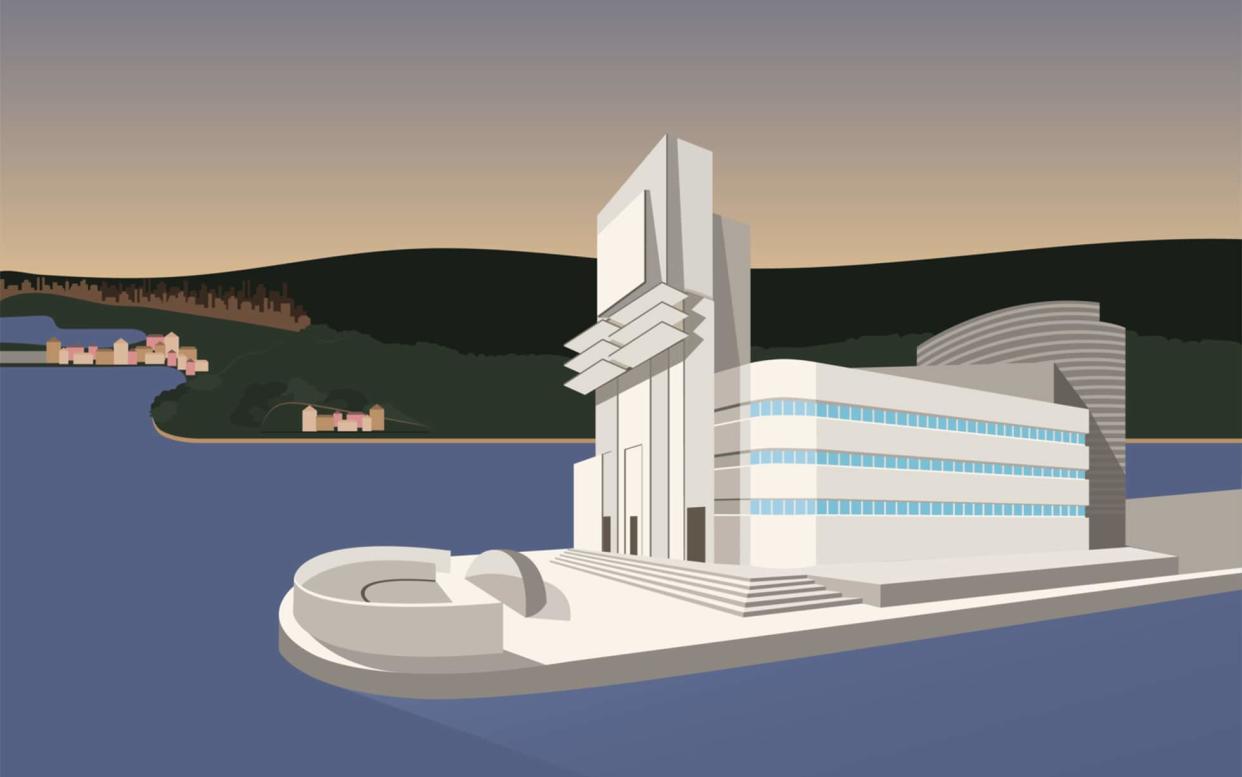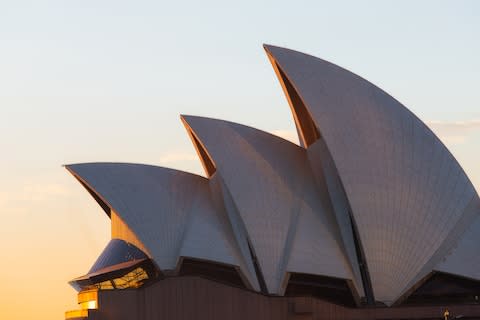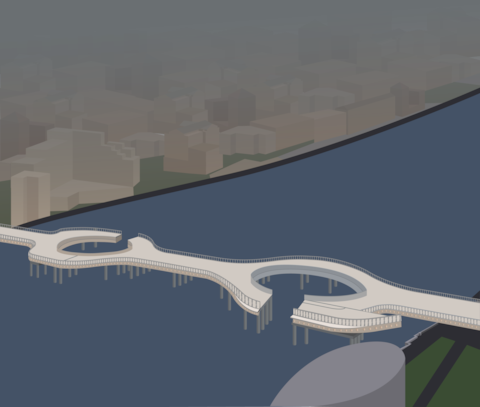The remarkable rejected designs for the Sydney Opera House

Thank heavens for Eero Saarinen. The Finnish American architect was a late addition to the jury for the 1957 contest to design the Sydney Opera House (construction of which began exactly 60 years ago). Unimpressed with the efforts on show, or so the legend goes, Saarinen reviewed the designs already rejected by his fellow judges and stumbled upon Jørn Utzon's - now iconic - vision. Had he failed to do so, the Australian city may have been lumbered with something far less impressive on its harbourside.
The above illustration (produced on behalf of GoCompare) shows a design that almost got the nod. Proposed by Sir Eugene Goossens, who was the conductor of the Sydney Symphony Orchestra, it was one of around 220 entries received from dozens of countries. Here’s another illustration of the same design, shared last year on Twitter.
Or this setup envisioned by the chap who came up with the idea of a Sydney opera house in the first place pic.twitter.com/l6toqvHQZ0
— Darryn King (@DarrynKing) October 19, 2017
The open-air theatre in the foreground looks pretty nifty, but the rest of the Art Deco design has been dismissed by Twitter users as a “military bunker”, a “Scientology building” and a “cross between a cinema and a car factory”.
Second place in the contest went to an even less appealing design by Joseph Marzella.
The judges wrote of its “circular plan and ascending spiral form of structure which, although heavy and massive, would form a total mass well suited to its position on Bennelong Point”. They added: “Whilst the massing is good and the architecture robust, we feel some doubt about the heaviness of form which characterises the structure and detail of this building.”

A contemporary CGI image of it in situ was also shared last year, prompting Reddit users to compare it to “a concrete toilet roll” and a vacuum cleaner filter.
Another rejected entry, by Max Collard, featuring walls of windows, fountains and hexagonal skylights, is shown below.

Or this monstrosity (third place) pic.twitter.com/cHxjACz7vb
— Darryn King (@DarrynKing) October 19, 2017
Russian-born Australian architect Anatol Kagan was also responsible for an unsuccessful design.
The winning entry
Jørn Utzon, an unknown 38-year-old Dane, eventually got the nod.
“We have returned again and again to the study of these drawings and are convinced that they present a concept of an Opera House which is capable of becoming one of the great buildings of the world,” the four judges wrote in their report. “Because of its very originality, it is clearly a controversial design. We are however, absolutely convinced of its merits.”

It has become one of the world’s most recognisable structures, while its cathedral-like interior is just as dramatic as the outside.

For more on the contest to design the opera house, follow this link.
Other rejected designs for famous landmarks
Other cities besides Sydney have dodged an architectural bullet or two. Tower Bridge might have looked like this had a certain F.J. Palmer had his way:

The Arc de Triomphe might have been overlooked in favour of a giant elephant. Actually, we’re quite fond of this one…

There was a contest too to design Nelson's Column. Our naval hero would have stood on a giant globe had this effort won.

For more rejected designs for famous landmarks, check out our gallery.


